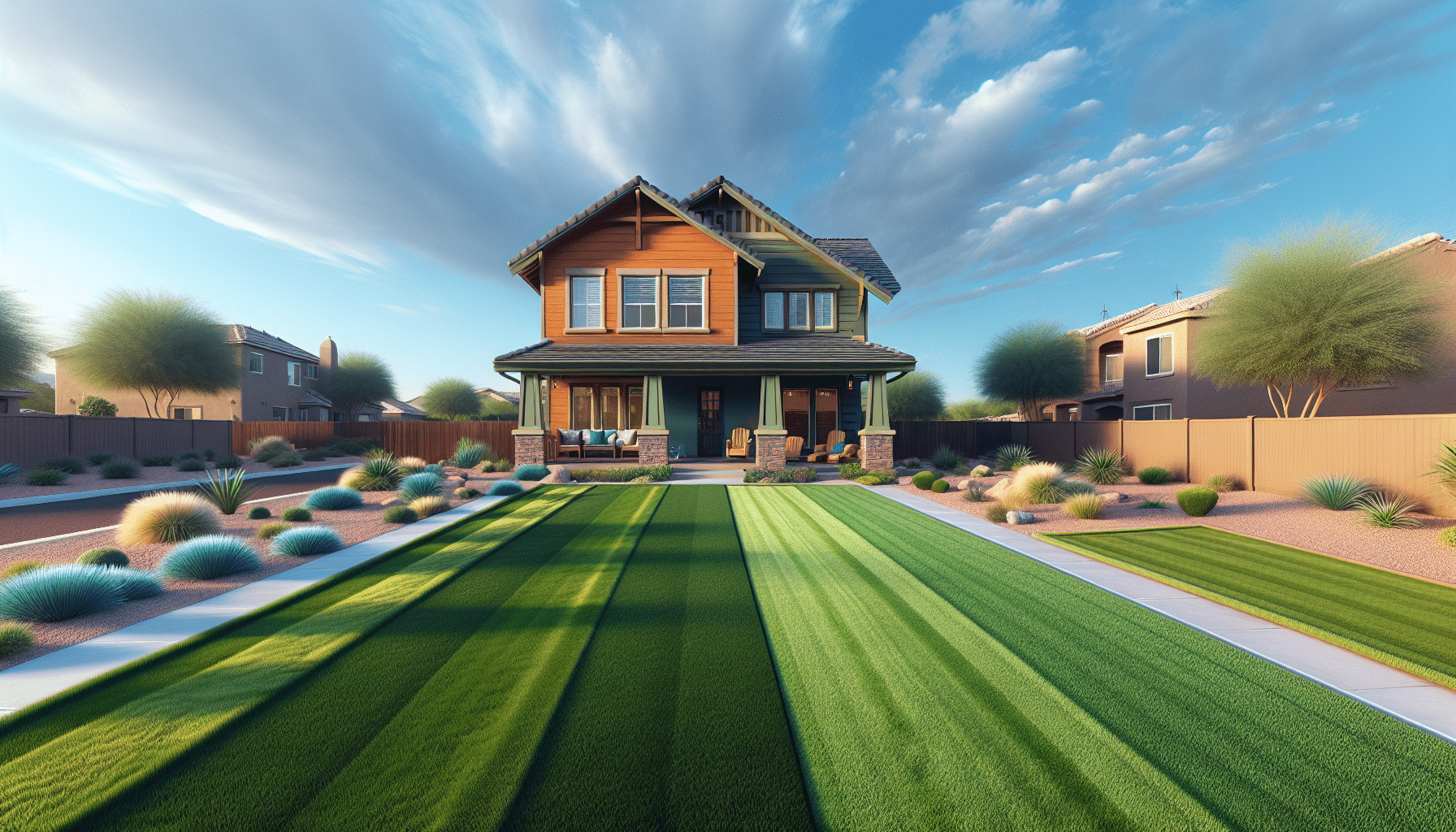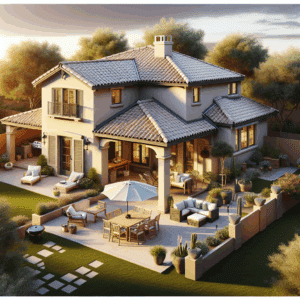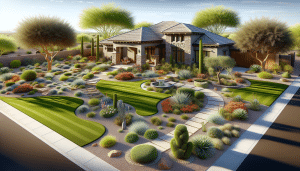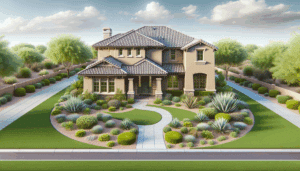At Red Mountain Landscaping, we’re often approached by homeowners pondering the age-old question: Artificial Turf or natural grass? Each has its own set of appealing qualities, but which one is right for your home? In this article, we’ll dissect the pros and cons of both to provide you with all the information you need to make an informed decision. With our expertise in the east valley Arizona area, we’re here to guide you towards the best choice for your lawn and your lifestyle.
Contents
Initial Cost Considerations
Understanding the cost implications is crucial in making the right decision for your yard. While prices can vary, there are some common trends to consider.
Artificial turf generally has a higher upfront installation cost compared to natural grass. The materials and the expertise supplied by a professional installation crew make artificial turf a significant investment. However, this cost is often offset over time due to the minimal maintenance required.
Natural grass, on the other hand, is less expensive to install initially. Yet, the ongoing costs for water, fertilizers, and mowing can add up quickly. When evaluating costs, it’s important to analyze both the initial investment and the cumulative expense over the years.
Aesthetic Appeal and Feel
For many homeowners, the look and feel of their lawn is of utmost importance. How does artificial turf measure up to natural grass in this area?
Naturally, grass has an organic appearance and feel, offering a softness underfoot that many homeowners find irreplaceable. It’s versatile for various uses, from playful afternoons with kids and pets to adult gatherings. However, the look and condition of natural grass can fluctuate with the seasons and care level.
On the flip side, artificial turf offers a consistently lush appearance regardless of weather conditions. Modern advancements have even made artificial turf surprisingly realistic to the touch. While it may not have the natural feel of grass, its consistent aesthetic can be a substantial benefit.
Maintenance Requirements
Achieving a beautiful lawn isn’t just about looks; it’s about how much work you’re ready to invest as well.
- Artificial Turf Maintenance: This option essentially requires minimal effort post-installation. An occasional rinse to remove dust and periodic brushing to keep blades upright are generally all that’s needed.
- Natural Grass Care: Be prepared to mow, water, fertilize, and deal with weeds. The effort you invest usually reflects directly on its quality and appearance.
Environmental Considerations
Thinking green is green! How does the environmental impact compare between artificial and natural options?
Natural grass provides environmental benefits such as absorbing CO2, producing oxygen, and aiding in soil and groundwater health. Conversely, maintaining grass requires significant water, which in arid areas can be concerning. Also, the chemical fertilizers and pesticides can impact local ecosystems.
Artificial turf, while requiring water for cleaning, usually consumes far less than natural grass upkeep. However, it’s made from synthetic materials, posing questions about its long-term environmental footprints. The debate here revolves around the sustainability of conserving water versus utilizing less eco-friendly materials.
Suitability for Pet Owners
Any lawn consideration extends to how our furry companions will adapt. Let’s examine the pet-friendliness of both surfaces.
Artificial turf is incredibly pet-friendly, with excellent drainage systems that prevent odors and mess from accumulating. Plus, it’s durable against even the most playful dogs. However, pets might find the heat retention of turf uncomfortable during hot days.
Natural grass can be forgiving on dog paws but may suffer from brown spots due to pet waste. Addressing these would require regular lawn repair, but rest assured, nature has its perks with natural cooling and comfort for our pets.
Durability and Longevity
No one wants to replace their lawn frequently, but some surfaces are simply built to last longer.
- Artificial Turf Lifespan: A great selling point is its long lifespan. With proper care, it can last 15-20 years, making it an excellent long-term investment.
- Natural Grass Durability: While it can last indefinitely, high-traffic areas may wear thin or compact, calling for reseeding or resodding over time.
Making the Right Choice for Your Home
Ultimately, the decision between artificial turf and natural grass is a personal one, dictated by individual needs and priorities.
Evaluate your lifestyle, considering how much time you can invest in lawn care and what you look for aesthetically and environmentally. Both options have their distinct advantages, so pinpoint what aligns with your vision for your yard.
Let us at Red Mountain Landscaping lend our expertise to this transformative decision. From helping you weigh the finer details to guiding you through the installation process—we’re your trusted partner.
Ready to explore your options or need more personalized advice? Reach out to us directly at 480-373-9312 or Request a Free Quote today.




